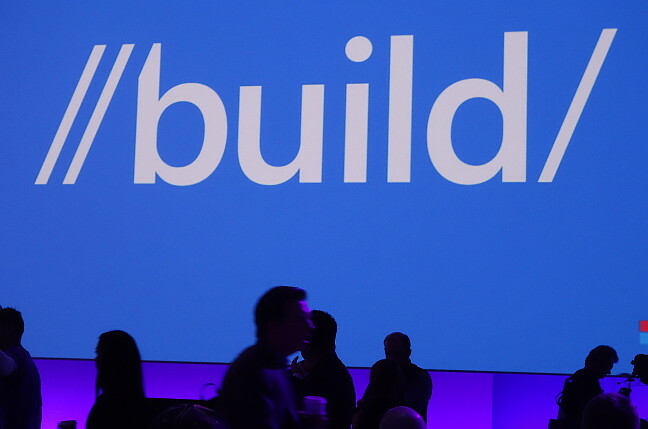Surely they can't be that desperate ...

Build 2015
Microsoft’s annual developer conference Build kicks off later today, and
rumours are swirling that Redmond has a bold plan to rescue Windows
Phone from irrelevance. Aside from a modest 10 to 15 per cent share in
some markets, the platform has gone nowhere, despite billions of dollars
of support from Nokia and Microsoft.
The plan, allegedly, would allow WinPho to run
Android binaries, much as BlackBerry allows in-place with a high degree
of compatibility. This would be emergency treatment, akin to injecting
adrenalin into the heart. It would also kill the patient.
Platforms live or die by developer support, and with
its focus on emerging markets Windows Phone has struggled to stay
upright. Some high profile apps have disappeared recently, although a
prudent developer with limited resources would surely be waiting for
Windows 10, rather than writing functionality twice.
Even where apps have Windows equivalents by name, the
functionality of the Android or iOS version is far more sophisticated,
such as with Evernote or Instagram.
The argument for providing Android compatibility is
that it would immediately solve the Windows “app gap” – the single
largest reason for new buyers returning a device to the store. Users
could enjoy the slick, consistent Windows Phone UI but not lose out on
an obscure app
Technically, getting it to work well and integrate it
with the native platform well is still a considerable challenge. You
can’t just fling an Android runtime in there – as BlackBerry once did –
and hope for the best. Android extensions are Linux binaries. BlackBerry
only cracked Android compatibility with a cunning hack, which we
described here. As our mole explained:
We had to let the SWIs trigger live and discern whether it came from a Linux binary or a QNX binary at runtime, without sacrificing performance of QNX code… Our work used a wide, labour-intensive component: dynamic cross linking, validating and shimming of the Linux APIs on QNX, and a really deep and tricky hack: catching syscalls in apps that bypassed libs, or had libs statically linked… Linux and QNX used the same ARM SWI instruction, but passed the syscall number in different registers.
The result works incredibly well. Android alerts are
channelled into the Hub, the phone’s unified persistent (and
interactive) notifications list. BlackBerry today has tamed Android. But
for how long? The runtime only supports KitKat today and future changes
could make keeping up hard work. BlackBerry found that the most
difficult apps to get compatible were deeply integrated into Google’s
binary blob, like Instagram. Unless there’s a rapid and specific
antitrust remedy, which is unlikely, Google is likely to continue to
pull more and more functionality into Play Services, and other
Google-only middleware.
Microsoft knows how hard it is to be behind and code
against a moving target because it used the same tactics 20 years ago
when it was trying to shrug off IBM. In 1992 Microsoft was the
incumbent, with all the apps, and all the developer mindshare. In an
attempt to popularise OS/2 IBM created a version that was a wrap-around
for Windows. Rather like a snake trying to eat an alligator, the
alligator opened its jaws wider and swallowed the snake. When the
wrap-around OS/2 booted and found DOS and Windows were installed, it
virtualised and hosted them. Sometimes the Windows apps ran even better
inside their new host – but you could never be sure.
It was clever but it had catastrophic consequences
for OS/2’s long-term application base. If Windows applications could run
well enough inside OS/2, why bother developing an OS/2 version at all?
Independent developers’ resources were better spent improving the
Windows version. After a couple of years, Microsoft moved the goalposts
again. IBM couldn’t keep up and threw in the towel.